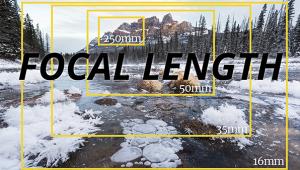The New ColorVision PrintFIX PRO; Precisely Accurate Professional Print Matching For the Rest Of Us
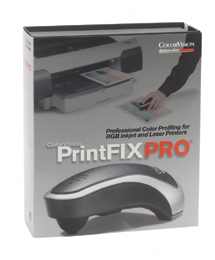 One of the more frequent complaints and problems from photographers is that they are not getting expected color reproduction from their printers. More times than not the solution to this problem involves what is referred to as color management. So, to launch into this review of a device and software for calibrating and profiling printers, I will begin with a short, and I hope easily understood, description of what color management is, what it does, and how it works.
One of the more frequent complaints and problems from photographers is that they are not getting expected color reproduction from their printers. More times than not the solution to this problem involves what is referred to as color management. So, to launch into this review of a device and software for calibrating and profiling printers, I will begin with a short, and I hope easily understood, description of what color management is, what it does, and how it works.
There is a need for color management because color reproduction devices like scanners, monitors/displays, and printers produce "device-independent" color. This means that a monitor or printer will reproduce different measurable colors for a particular set of RGB number values compared to another device. This is color anarchy.
Every printer made will reproduce a slightly different color of orange from the values R-218 G-112 B-25 than any other. To overcome this unpredictable chaos of independent variation, some years ago a group of key companies involved in color reproduction created the ICC (International Color Consortium) and agreed on a set of standard colors as the basis for a system of color management. The management is achieved by measuring the actual reproduction of a color device against the standard color, like a display or printer (calibration), and creating a file (profile) that describes how the device varies from the standard ICC colors.
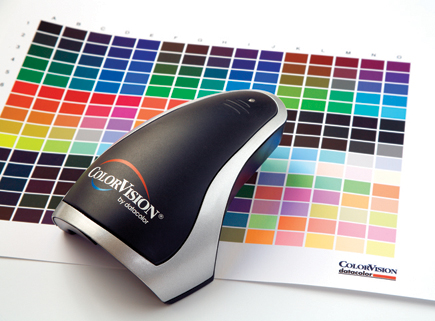 |
|
|
Once each device like a monitor and printer is calibrated (measured) and there is a profile file placed in the operating system of the computer running the device, then the device can reproduce colors that are true to the ICC standard colors. This is accomplished by a virtual device (like a translator) that's part of the operating system called a CME or CMM (a Color Management Engine or Machine). The CME receives RGB data from an application's open image file with sets of numbers for each pixel's color. The color data is then corrected relative to the profile information of that device so that colors are reproduced according to the ICC standard color palette.
So, if your monitor/display is accurately calibrated and profiled, then when you edit a photograph in Photoshop the number values for each pixel should be recorded in a saved file that is true to what you see on screen. That is the source information needed to make a color managed print, one that matches the monitor display of the image to the printer.
This is where ColorVision's new PrintFIX PRO comes into play. It provides a precisely accurate measurement of printer color performance to produce a highly detailed and accurate profile.
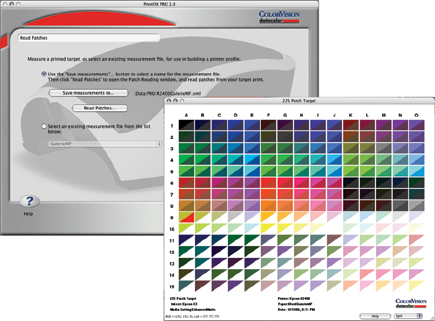 |
|
|
ColorVision's PrintFIX PRO Hardware And Software
Before getting into what is involved in the hardware and software that is in the PrintFIX PRO package, you may want to know the advantages of a precisely accurate, professional way to calibrate and profile your printer. It is true that with any modern photo printer when you install the driver software, profile files are added for the printer to your operating system for use by the printer. But they are limited to just the papers and inks sold by the printer maker. In addition, these "canned" profiles may not match your printer very precisely. A consumer photo printer is a mass-produced product and each unit may involve some production variations. A profile for all printers and a particular paper has to target the center of those manufacturing variables. You or I cannot tell if the printer or paper we have is a bit off one way or another and whether we are obtaining ideal performance, or just a percentage of what is possible.
Precision custom printer profiling makes it possible to obtain the best possible print performance potential your printer and paper is capable of, as well as make it possible to use third-party papers (or inks) to get equally high print image quality. In other words, if you spend a considerable amount on a photo printer, as well as ink and paper, wouldn't you like to obtain the maximum image print quality possible from your investment?
The ColorVision PrintFIX PRO hardware and software is simple and easy to use. Under the surface what makes it work is very sophisticated and complex, as I learned from several months of participating as a beta tester for this new product. The hardware is a spectrocolorimeter whose function it is to read patches of color on paper produced by a printer, sometimes referred to as a "patch reader." It is marginally larger than a computer mouse, being somewhat triangular with a very small reading orifice at the head of the triangle. Inside there are colored LEDs and a sensor to precisely measure the light reflected from the printed color to determine the precise color value.
The PrintFIX PRO software is an application that is entirely wizard-driven by screens with text instructions and menu access for the printer driver. Information input for each step of the calibration and profiling process is performed by going from one screen to the next until a profile file is created and installed in your operating system. In addition to the wizard-driven process you can use the spectrocolorimeter to read color samples and obtain numerical measurement values. You can also use PrintFIX PRO as a computer-driven digital densitometer to linearize black and white print output.
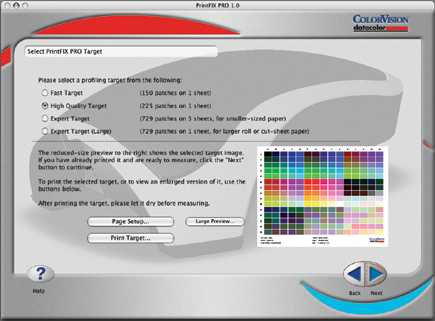 |
|
|
Profiling Your Printer
After easy software installation, launch the application and plug in the spectrocolorimeter via its USB cable. The first screen is just some simple text instructions that direct you to open your printer Page Setup window and designate the page orientation to landscape. Beginning with this first wizard screen, reading the directions fully and carefully following instructions is all you really need to do to make the product work effectively. But as we all know, photographers exercise a kind of bravado by using a product without ever cracking the user's manual. Sadly, many have been inadvertently encouraged in this by manuals that are largely unreadable, and, in the case of cameras, by promises that great pictures will result if only the user can find the On switch and the shutter release.
- Log in or register to post comments













































